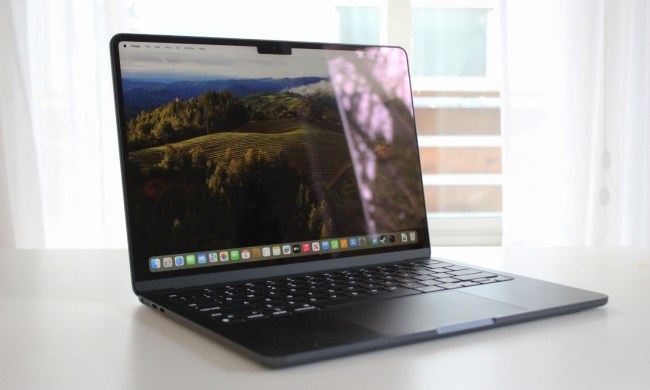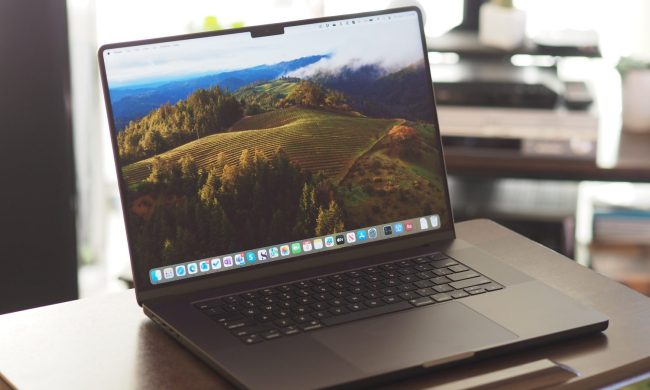Apple isn’t the only company to offer ARM-based chips in its laptops. Microsoft went there first, actually. Not once, but twice, with both the Surface RT and, most recently, the Surface Pro X.
Which makes the better ARM-powered system, though? Which one is more powerful? How do apps work on the devices? In this side-by-side guide, we’ll be answering those questions, and a lot more.
The design

If you’re looking solely at design, there’s a lot of differences between the new ARM MacBooks and the Surface Pro X, with the biggest being form factor. Microsoft’s Surface Pro X is a convertible tablet with a detachable keyboard and a screen you can touch and ink on with the Surface Pen, whereas the new ARM-based MacBook Pro and MacBook Air are traditional clamshell laptops.
The Surface Pro X was a massive change for Microsoft, though. It is designed out of aluminum, with either a matte black or platinum finish, and has significantly thinner bezels and a bigger, 13-inch screen than the other Surface Pro devices. It is also thinner and lighter, coming in at 1.7 pounds and just 7.3mm at its thinnest point. There’s also the advantage of the kickstand, which makes it easy to prop the device up and use anywhere you go. These features make the Pro X a super portable machine.
Contrary to rumors, Apple’s new ARM-based MacBook Air and MacBook Pro aren’t that different from existing Intel-powered MacBooks. They share the same dimensions and display. The MacBook Air with an M1 processor is thin and light, coming in at around 2.8 pounds in weight and 0.6 inches in thickness. The MacBook Pro with the M1 processor is around 3.0 pounds — heavier, but not by much.
Both devices have the signature aluminum enclosure, though the Air comes in three colors. The machines all have Apple’s new Magic Keyboard, with the Force Touch trackpad. Displays on both models come in at 13.3 inches, with the same 2,560 x 1,600 resolution. The MacBook Pro has the Touch Bar, which gives access to quick shortcuts.
The specs

Although both systems have an ARM CPU at their heart, the Surface Pro X and Apple M1 MacBooks do offer very different specifications and configuration options. We still don’t know what kind of performance to expect from the M1 MacBooks either, so accurate comparisons aren’t easy to make at this time.
The new M1-powered MacBook only come in one configuration. It’s an eight core CPU with four performance cores and four efficiency cores. The GPU has eight cores, while the Neural Engine has 16 cores.
We don’t know much about the clock speed of the processor, but Apple calls it the “world’s fastest CPU core.” We do know it’s built on the 5nm process, allowing Apple to pack more transistors into the same physical dimensions as older Intel CPUs based on 14nm and 10nm processes.
When it comes to RAM and storage, options include 8GB or 16GB of memory and 256GB to 2TB of storage.

The Microsoft Surface Pro X is equally hard to quantify as we haven’t tested it yet. But by the numbers, it is quite different from Apple’s offering.
Microsoft’s SQ2 processor inside the Surface Pro X is built on a less dense 7nm process and is loosely based on Qualcomm’s Snapdragon 8cX Gen 2 chipset. That means it is not necessarily an entirely custom chip like Apple’s M1. That should mean that Apple’s design is more optimized for the types of tasks it’s expected to do and will work more seamlessly with the other bespoke configuration options Apple picked.
It’s not a guarantee, but it does hint that Apple’s solution may be more capable.
Microsoft’s SQ2 in the latest Surface Pro X also has eight cores and eight threads. Its base frequency is 1.8 GHz and can be boosted up to 3.1 GHz when needed. Integrated graphics include the Qualcomm Adreno 690. Microsoft also has a Neural Network accelerator on board its SQ2 chip, for use in eye tracking.
The Surface Pro X can be configured with either 8GB or 16GB of RAM, and storage options range from 12GB to 512GB. Storage is user-upgradable, unlike on the MacBooks.
On paper, it sounds as if Apple’s solution will be faster. Apple claims that the M1 on the MacBook Air offers twice the performance of the (unspecified) “latest PC laptop chip” at a quarter of the power consumption.
The apps

One of the biggest issues facing both Microsoft and Apple with the Surface Pro X and MacBook Air and Pro is app compatibility. With the shift to ARM-based silicon, there are worries about getting apps to work correctly. Apple has its own Rosetta 2 emulator to help developers with this, and Microsoft does this through underlying app emulation on Windows 10, but emulation hasn’t been a silver bullet for this problem so far.
Apple is likely to have the stronger suite of applications in the near future. It is allowing developers to port both iPad and iPhone apps to the Mac with the Universal App Program. Thanks to Rosetta 2, you can run apps written for Intel-based Macs without having to update them. Performance is unknown, but Apple says that optimizations with the M1 chip will allow these apps to run faster than they do on Intel Macs. Simply put, most apps that run on an Intel-based Mac should run on the ARM-based MacBook Pro and MacBook Air just fine.
We’ll need to test this ourselves to confirm the performance claims, but they’re exciting nonetheless.
With the Surface Pro X, Microsoft struggled a lot in this same area. While it is true that the device is good for web browsing or Office 365 work (Microsoft’s Edge browser is optimized for it,) the Surface Pro X only works with 32-bit apps; 64-bit apps, which most developers are shifting to, won’t work on the device. Microsoft even has a warning for that on its own website. It’s up to developers to recompile their apps to 32-bit to work on the Surface Pro X, and even if they do, there are performance worries about the underlying emulation.
Throwing greater performance at the problem, Microsoft has made it less of one with the SQ2 processor in the top-end 2020 model of the Surface Pro X. As many early reviewers pointed out, the SQ2 processor is faster than the original SQ1. There are no fundamental changes though, so the app gap problem still exists, giving ARM MacBooks a distinct advantage.
Microsoft says it’s working on 64-bit app-emulation for Windows 10 on ARM, but there’s no word yet on when it’ll happen.
The portability

On the MacBook Pro and Air, the port selection includes two Thunderbolt 3 ports, supporting USB-4, and a headphone jack. It also supports Wi-Fi 6, as well as Bluetooth 5.
Battery life is rated at 15 hours of web browsing, and 18 hours for video playback. The MacBook Pro bumps that up to 17 hours of web browsing and 20 hours of video playback, and the connectivity is the same.
Microsoft’s Surface Pro X is a bit different. Port selection includes two USB-C ports, one proprietary Surface Connect port for charging, and a Nano SIM card slot. It doesn’t support the new Wi-Fi 6 standard, though, and instead stuck with Wi-Fi 5. It does, however, have a Qualcomm modem, which allows it to access LTE connections and not depend on Wi-Fi. This is a huge benefit in portability when it comes to the device.
Battery life on the Surface Pro X is rated at 15 hours for typical use. Most reviewers got to around nine hours of real-world usage, though.
Surface is the best buy, for now
New hardware might sound exciting, but it’s not fair to recommend it until it’s more well-known. If you’re choosing between a new M1 MacBook Pro or Air and the Surface Pro X, then the Surface Pro X is the best buy for now. Apple’s new MacBooks look to have the advantage in terms of app compatibility, performance, and raw power, but have not yet been tested outside of Apple’s own labs. The Surface Pro X, meanwhile, has the benefits of LTE, as well as a touchscreen and more portable design. Until we test Apple’s new M1-powered MacBooks, the Surface Pro X is the system we can most easily recommend.


